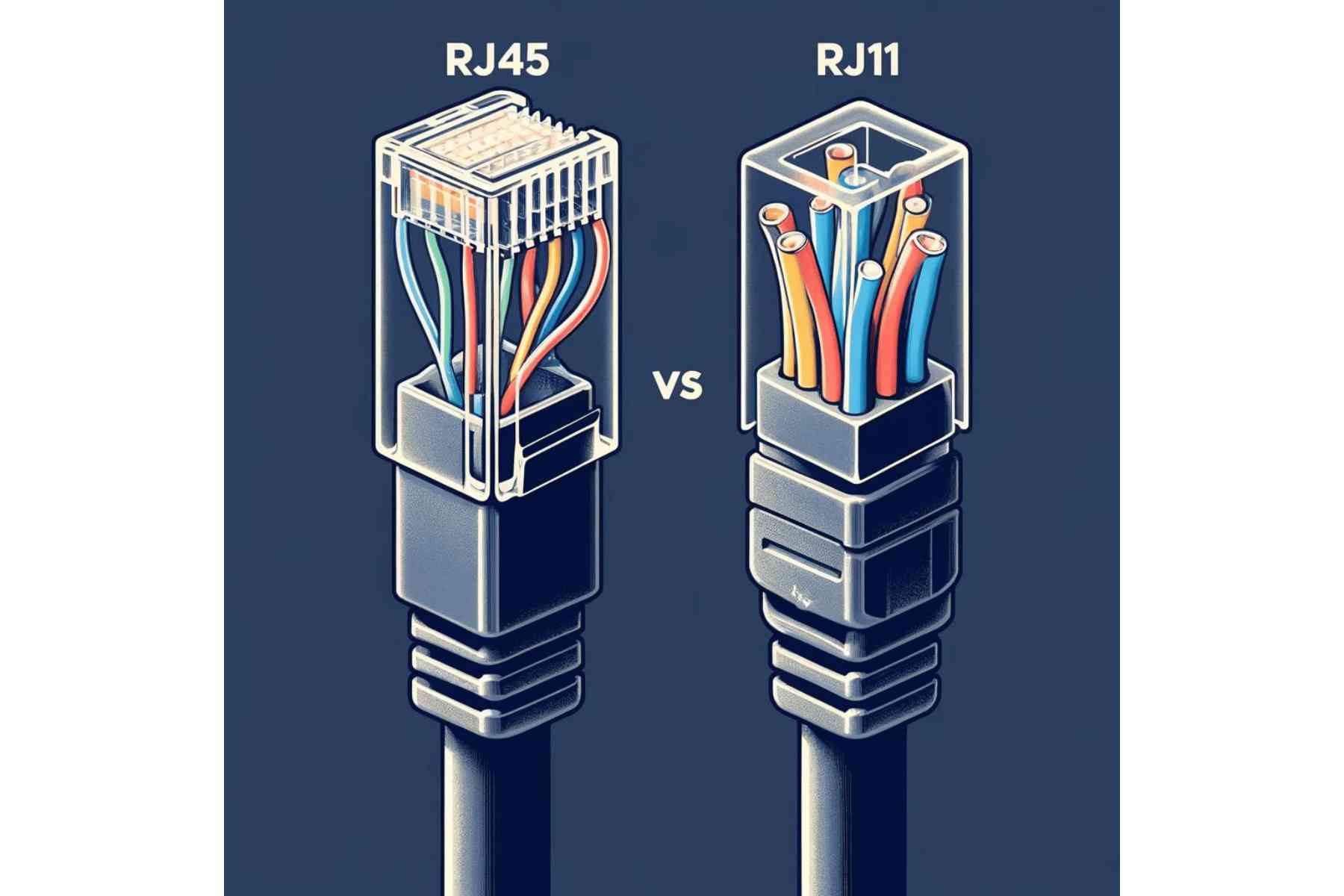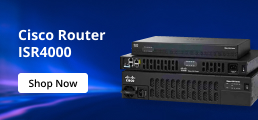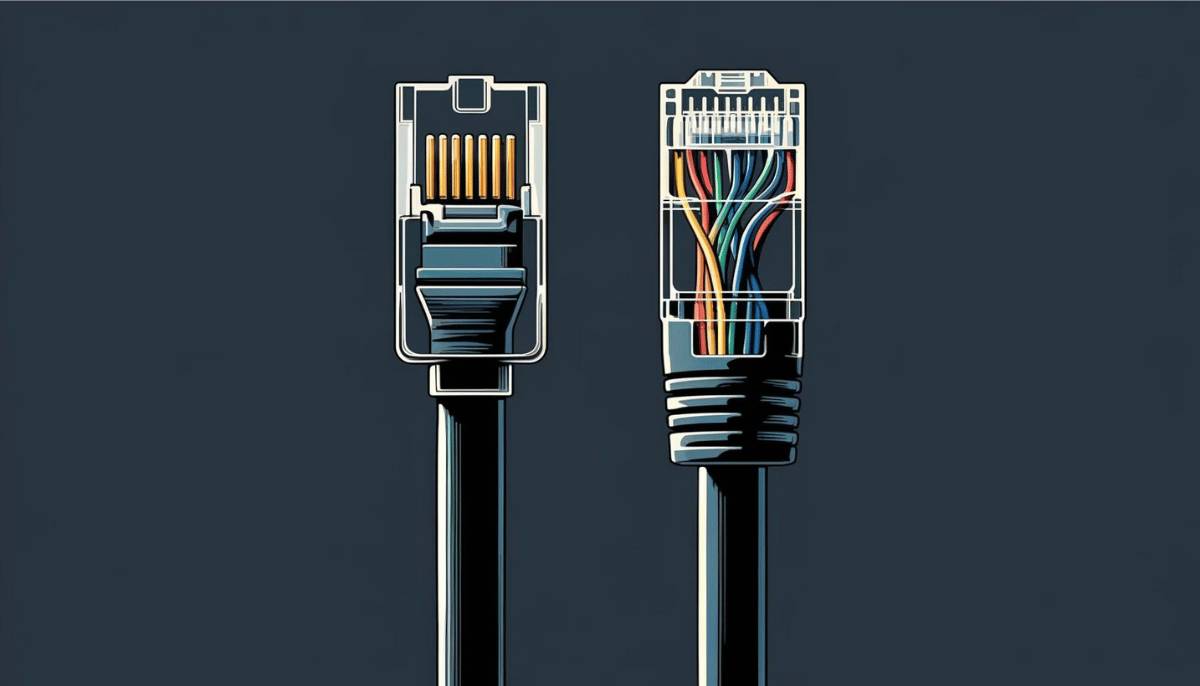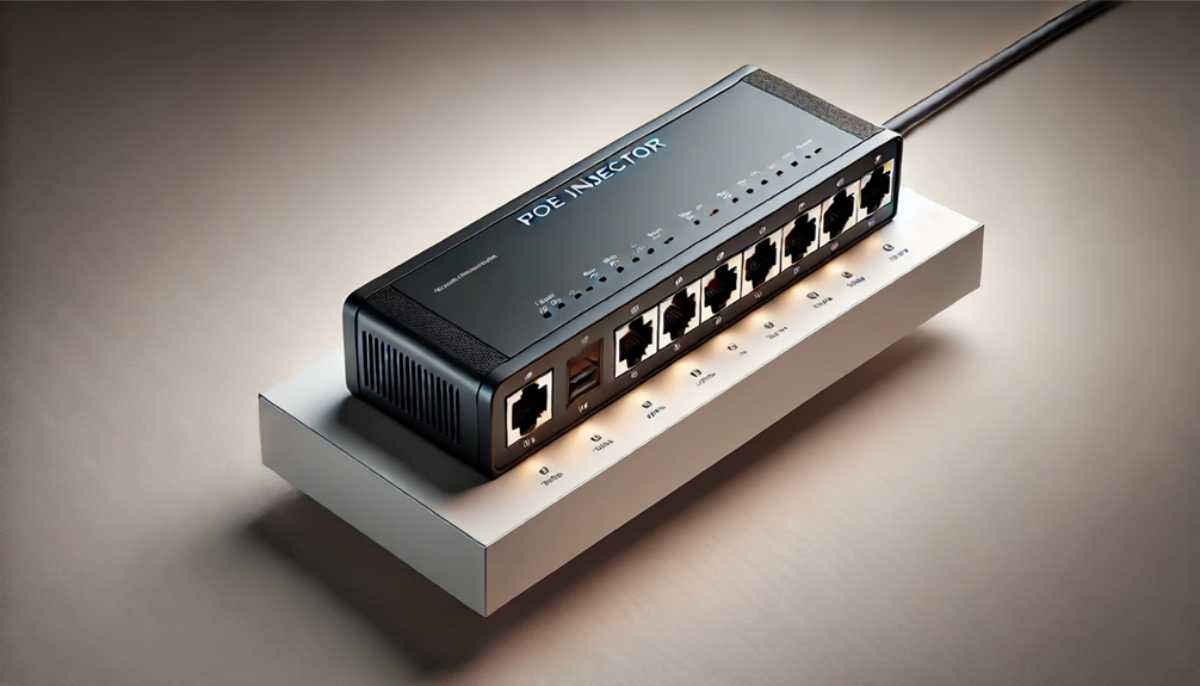RJ11 vs RJ45: Understanding the Differences and Uses
Table of content
Introduction:
Have you ever used RJ11 or RJ45 in your life? Being a part of the present networking world, you must have done it multiple times. If not, then possibly you have heard people around you speaking of these devices, or read somewhere at your workplace; anyway. Unfortunately, many people don’t have enough knowledge about RJ11 vs RJ45, and that causes many networking damages due to mismanagement. Therefore, we have come up with this blog to capture a complete picture of the scene. Of course, RJ11 and RJ45 might look similar in appearance to the untrained eye, but in reality, they have distinct functions, features, and use cases. At their simplest, RJ11 is a cable connector used in telephones, whereas RJ45 is used in networking, where it connects computers and other devices to a router using Ethernet cables. If you are curious about RJ11 vs RJ45 and want to reach the core, keep reading ahead!
RJ11 vs RJ45: What Should You Know

Knowing the simplest definitions and things that are helpful in recognizing RJ11 vs RJ45 is crucial. Therefore, here are the most comprehensive definitions with technical capabilities of both Registered Jack-11 and Registered Jack-45:
What is RJ11?

RJ11 is a type of connector that connects traditional PSTN telephone networks. In other words, RJ11 is a cable connector primarily used in telephone sets, ADSL lines, and modem cables. It features a 4-slot design and adheres to the 4P4C wiring standard, which denotes 6 positions with 4 conductors. Tradititonally, RJ11 is smaller in size than the RJ45 and can support bandwidths up to approximately 24 Mbps.
What is RJ45?

Generally speaking, an RJ45 is an advanced and secure compact technology that connects various electronic device to Ethernet cable. It is a newer version of RJ11 connectors. RJ45 is an eight-slot connector known as an 8P8C wiring standard, which means that it has eight wires that are terminated in the connector, occupying all the available slots. These jacks are primarily used in networking to connect computers or other network elements to each other. It is notably bigger in size than RJ11. Additionally, when used with Cat7 and Cat6a cables, RJ45 can support up to 10Gbps speed over Ethernet.
RJ11 vs RJ45: Key Differences

If you are new in the networking industry, chances are you can get confused when picking between RJ11 and RJ45. Because they can appear similar in a single glance. But, when you have closer look, there are differences that really matter. Some of these differences are mentioned below:
- The primary distinction lies in their structural design, where the RJ45 connector is bigger in size, equipped with 8 pins, in contrast to the RJ11 connector which has 6 pins and a narrower plug end. Additionally, they have different pin colors.
- RJ45 is capable of supporting a bandwidth of 10Gbps as it is deployed in data communication networks that utilize Ethernet connections. This bandwidth can be further extended through the use of fiber optic technology, including fiber cables and fiber media converters. In comparison, RJ11 is limited to a bandwidth of 24Mbps.
- RJ45 is commonly known as 8P8C, because of its eight pins and eight connecting ports, while RJ11 is referred to as 6P4C, showing its configuration of six pins and four connecting ports.
- Typically, RJ45 connectors are employed with Cat5 and Cat6 cables, whereas RJ11 connectors are used mainly with telephone cables.
- RJ45 connectors facilitate connections among switches, cables, computers, routers, and other devices within a copper cable network.
- RJ11 switches are primarily designed with two sockets to support a two-line telephone system. Conversely, RJ45 switches are available in various forms, including managed and unmanaged network switches with multiple port configurations such as 4, 5, 8, 10, or up to 20 ports. Some switches designed for fiber connections feature SFP+ ports at one end and RJ45 ports at the other, with the potential for varying port numbers.
RJ11 vs RJ45: How Do They Work?
Before connecting RJ45 and RJ11 in their respective environments, it is crucial to understand how they work. Without knowing the working principle, you cannot get the proper functioning or performance as per your expectations.
Working of RJ45:
RJ45 connectors usually work for Ethernet cables that connect devices to Local Area Networks and the internet. They facilitate data transmission between network devices like computers, switches, routers, and more by safely connecting 8 wires inside the cable. Each of these wires carries signals representing binary data. RJ45 helps users establish a connection where devices can communicate and share the resources over the network.
Working of RJ11:
Primarily used for telephone cables, RJ11 connectors connect the wires from a telephone line to the phone jack. Typically, these connectors have 4 or 6 wires that carry signals representing audio or data like voice chats. RJ11 allows you to make phone calls by connecting your telephone devices and the telephone network.
05 Use Cases of RJ11 vs RJ45:
As discussed earlier, RJ11 connectors are not in common use except some voice communication sectors. Their position has been taken by their newer version RJ45 used in most data communication centers where high-speed data transmission is required. Here, we enlist, some common use cases of RJ45 connectors to let you know about their applications:
- RJ45 ports are predominantly used for Ethernet networking, enabling devices to connect to Local Area Networks (LANs) and Wide Area Networks (WANs).
- RJ45 ports are commonly used to connect computers, laptops, gaming consoles, and smart TVs to the internet in homes and offices.
- RJ45 ports enable high-speed data transmission between devices within a network. They are essential for sharing files, documents, multimedia content, and large data sets across connected devices.
- Many VoIP phones and IP-based communication systems use RJ45 ports for voice communication over the Internet.
- RJ45 ports are found on network switches and routers, allowing multiple devices to connect to the network simultaneously.
- Many network-enabled printers and peripherals feature RJ45 ports, enabling users to access and use these devices over the network.
Conclusion:
Whether you need to consider RJ11 vs RJ45 or not, it can be understood only through a genuine and authentic guide. In this blog, we have enlisted core information brought to you from authentic platforms. Now, it is no longer a tough task to understand the differences between RJ11 and RJ45. Still, it will give us immense pleasure if you come to us in case of any queries regarding this or related topics. Best of Luck!
Frequently Asked Questions:
What is the main difference between RJ11 and RJ45?
The main difference RJ11 vs RJ45 lies in their physical appearance, which many people cannot spot. First, RJ11 connectors have 4 pins and six positions, while RJ45 connectors have eight pins and eight positions. Secondly, their sizes are different from one another.
Where can I use an RJ45 connector instead of an RJ11?
When it comes to connecting computers or other electronic devices through Ethernet cables in a Local Area Network, you have to choose RJ45 from RJ11 vs RJ45. This is because RJ45 connects a modem or similar devices to a router to establish communication between the devices.
Can RJ11 and RJ45 be used interchangeably?
No, RJ11 and RJ45 cannot be used interchangeably in the context of RJ11 vs RJ45. Both devices work in different scenarios. RJ11 is used in voice communication sectors, whereas RJ45 is used to connect computers and related devices to a router in a local area network.
Which type of devices need an RJ45?
Generally speaking, all devices that are Ethernet-connected need an RJ45 connector.
Which one is right, RJ11 or RJ45?
Having their distinct functions, both RJ11 and RJ45 can be compulsory in their respective use cases. Besides, they are not interchangeable, so you cannot choose one as an alternative for the other.




 Catalog
Catalog





















































































































 (800) 870-9487
(800) 870-9487